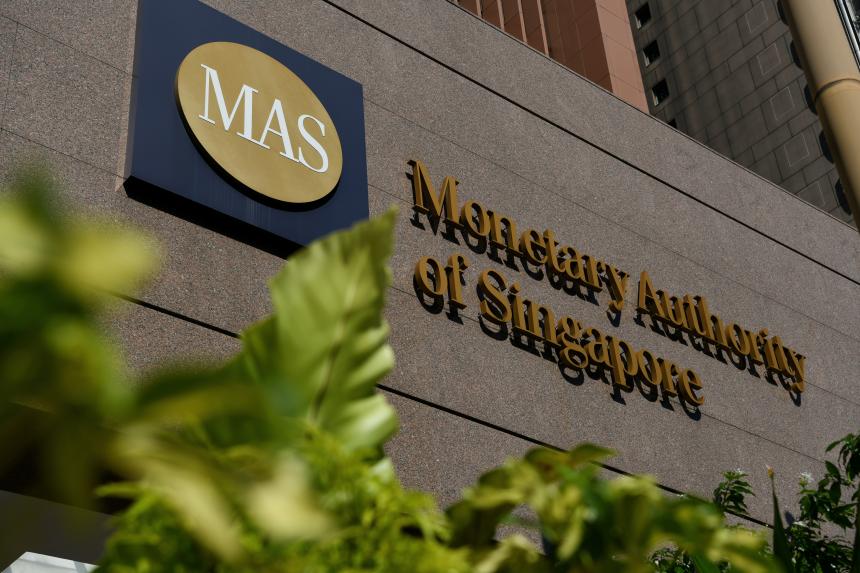SINGAPORE - In a move that will plug Singapore deeper into the use of blockchain technology in the financial markets, the Monetary Authority of Singapore (MAS) is adding more asset classes to its industry pilots under its Project Guardian initiative.
The regulator said on Monday that it would expand into three areas: asset and wealth management, fixed income and foreign exchange.
Project Guardian, launched in May 2022, aims to explore the use of public blockchains to build open and interoperable networks that would enable digital assets to be traded across platforms and liquidity pools.
A new body, called the Project Guardian Industry Group, has been set up by MAS to lead these pilots.
The group comprises 11 financial institutions such as HSBC, UBS, Schroder Investment Management and Singapore Exchange (SGX) Group.
In the area of asset and wealth management, pilots range from digital structured products to tokenised investment vehicles.
For instance, UBS Asset Management is launching a pilot to explore the native issuance of a variable capital company (VCC) fund on digital asset networks, to enhance fund distribution and facilitate improved secondary market trading of VCC fund shares. VCC is a corporate structure for investment funds in Singapore.
Meanwhile, Schroders is working with global funds network Calastone to explore the capabilities of a tokenised investment vehicle for VCCs. The vehicle aims to let clients further personalise their investment solutions, while blockchain technology is meant to simplify daily operational processing.
Ms Lily Choh, chief executive of Schroders Singapore, said blockchain technology has the potential to improve speed and transparency, achieve efficiencies, and allow personalisation of investment options in new and exciting ways.
In the area of fixed income and foreign exchange, the pilots are in tokenised asset-backed securities, tokenised bonds and tokenised bank liabilities.
DBS Bank, SBI Digital Asset Holdings and UBS are carrying out a pilot repurchasing agreement with natively issued digital bonds, while Standard Chartered and supply chain fintech firm Linklogis developed an initial token offering platform to enable the issuance of asset-backed security tokens listed on SGX.
Mr Kai Fehr, global head of trade and working capital at Standard Chartered, said the initial pilot shows that asset-backed tokenisation is viable in financing real-world economic activity and that they will “focus on expanding the scope to include a wider range of asset classes, identifying additional partners and developing guard rails that ensure investor protection”.
The Japan Financial Services Agency has also joined Project Guardian. MAS said it is the first overseas financial regulator to do so and paves the way for them to collaborate on digital asset innovation and best practices for asset tokenisation.
The move comes after MAS launched the first industry pilot under this project in November 2022. It involved the buying and selling of tokenised Singapore Government Securities, Singapore dollars, Japanese government bonds and Japanese yen.
The regulator has also proposed a common framework in designing digital asset networks, in line with an emerging trend in global clearing and settlement.
Based on blockchain technology and digital assets, these networks are open and interoperable.
The proposed framework is included in a report called Enabling Open and Interoperable Networks that was published on Monday. The report was jointly developed by MAS and the Bank for International Settlements, and took in input from six financial institutions – DBS, JP Morgan, HSBC, SBI Digital Asset Holdings, Standard Chartered and UOB.
A common framework, which is elusive at the moment, will enable digital assets to be traded with ease across different networks and liquidity pools.
The report proposes that current international standards for financial market infrastructures (FMI) could be applied to a digital asset network, but it is vital to first identify which FMI functions are relevant.
It added that other international standards relating to areas including trading, custody and depositor protection might have to be considered if the functions of the digital asset network touches on them.
A notable feature of digital asset networks is the shorter settlement cycles, the report said, adding that this has implications for both credit and liquidity risks.
“Faster or instant settlement could reduce or eliminate replacement cost risk (a form of credit risk) and therefore reduce or eliminate the amount of margin required.
“However, this would likely involve pre-positioning cash and digital assets pre-trade, which would increase liquidity costs,” the report noted.
The developments come as digital asset networks gain prominence in the financial industry and are touted as an alternative financial market infrastructure that will make it faster and cheaper to clear and settle payments and tokenised securities.


